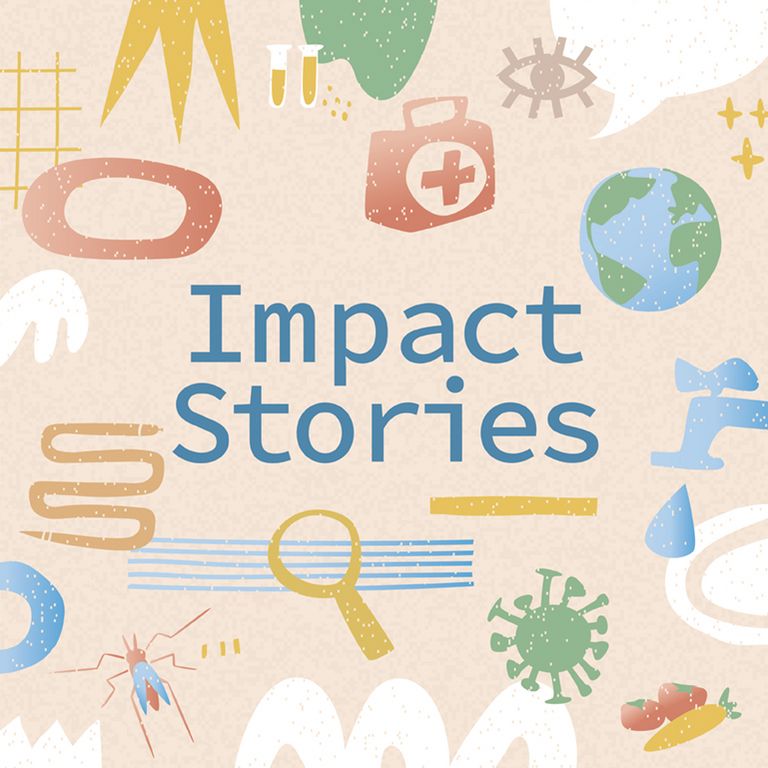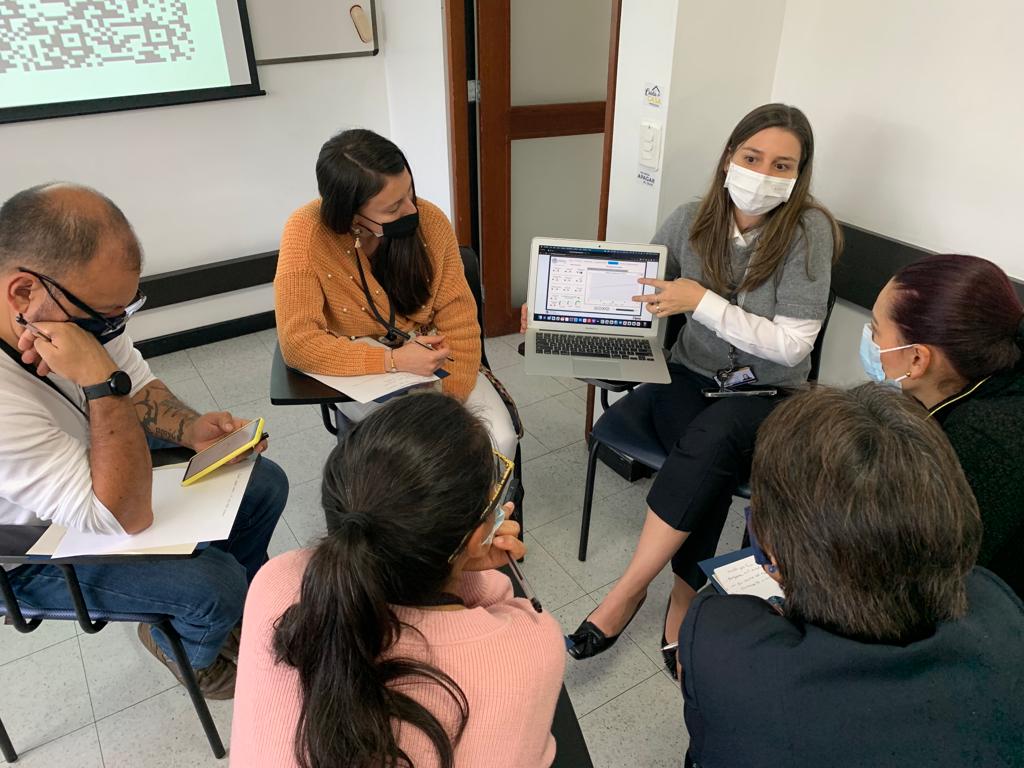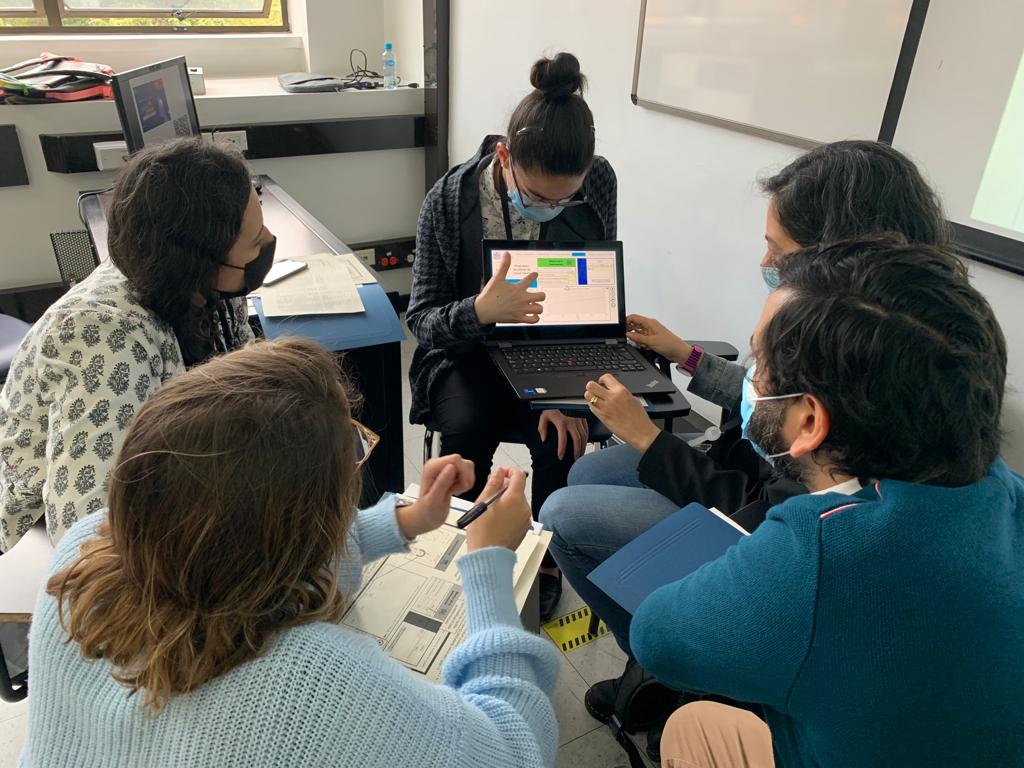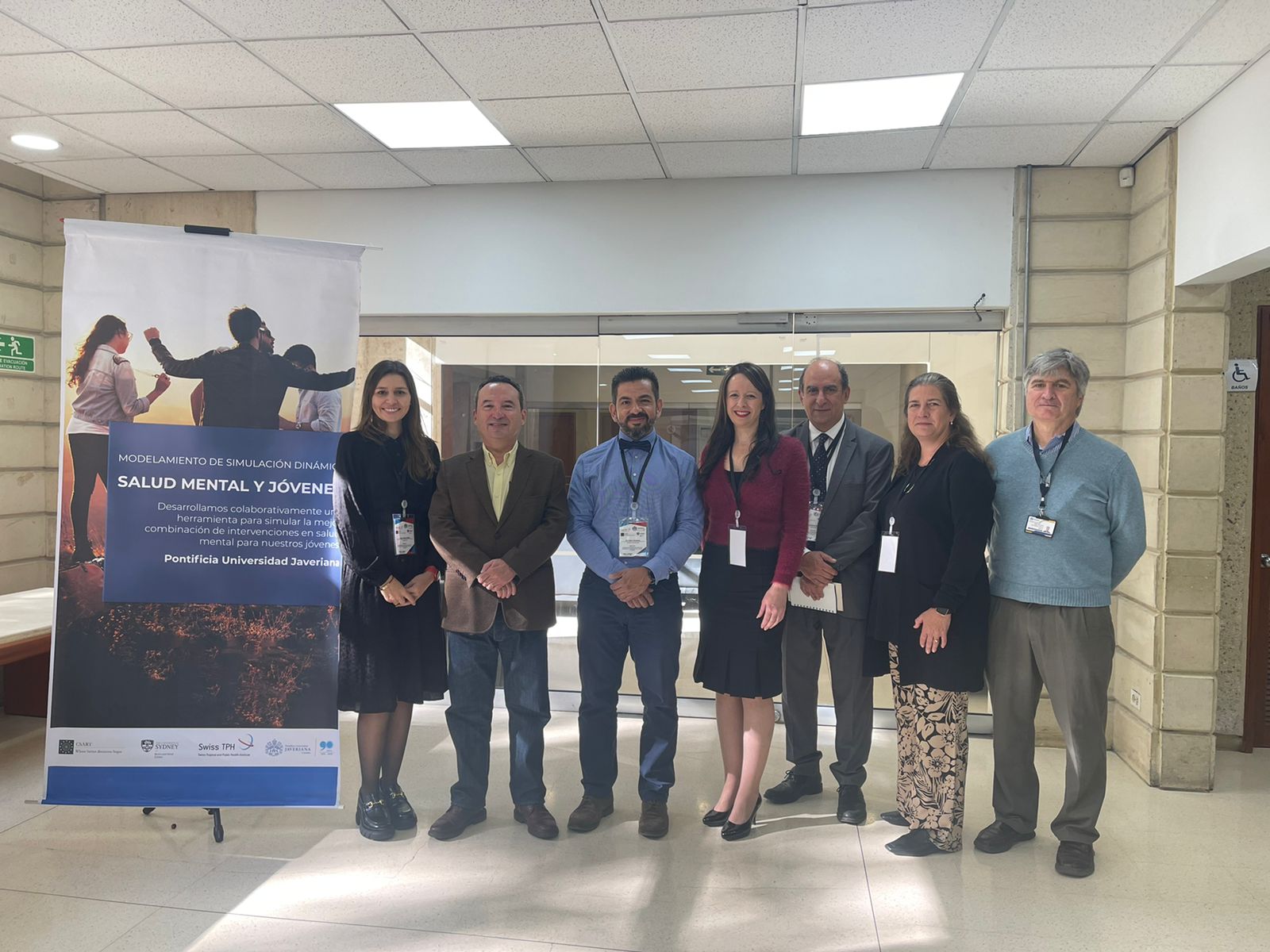

Hi Salvador, thanks for joining us today! Can you tell us a bit about yourself?
I am a multidisciplinary expert in public health with a strong focus on non-communicable diseases. Mental health is deep in my interests since I have a lived experience. I am really grateful and honoured to be part of this project and contribute to the mental health of young people with this fantastic team and partners.
You have been working in an adolescent mental health project in Colombia for the last 2 years. Why is it important to address mental health already at a young age and what is special about the situation in Colombia?
Mental illness is a significant and growing burden in Colombia. With a larger population living in urban areas, there is a higher risk of mental disorders and increased contextual complexity that includes social, family, educational, and work-related aspects in young people’s environments. Colombia has a very young population, 40% of the population is under 25 years old, exposed to high levels of violence after five decades of internal conflict and other negative determinants. According to the most recent Colombian National Mental Health Survey (2015), the lifetime prevalence of mental disorders among adolescents aged 12-17 years was 7% and the rate of suicide attempts was 3% compared to 10% and 1.2% correspondingly in the USA. There are only few specialised child and adolescent psychiatrists in the country and many Colombian adolescents access mental health services in adult facilities that may not be adequately equipped to meet their specific needs, leading to further alienation of these young people.
Countries like Colombia, which have limited resources for health – in this case 7% of the gross national product compared to 11% of Switzerland – struggle to decide where to invest to achieve the best results. Against this background, the World Health Organization recently published its World Mental Health Report, which states that the coverage of mental health needs is insufficient and inadequate. This report is also a pledge for a deep transformation and calls on all stakeholders to join forces to identify and reshape the environments that influence mental health and to strengthen the systems that care for mental health.
How does Swiss TPH contribute to this commitment?
Swiss TPH has reacted to this pledge by collaborating with CSART to address mental illness in the early life of young people in Bogotá, Colombia, and prevent its devastating effect on their social, educational and economic future. Funded by Fondation Botnar, CSART, Pontificia Universidad Javeriana, Swiss TPH and Colombian stakeholders worked together to develop an interactive decision support tool, a so-called computer simulation model [1], to understand the local mental health system. Designed to inform strategic planning, the tool will be embedded in an ongoing monitoring and evaluation cycle that will be updated over time with new data to provide a solid framework for continuous improvement.
What is unique about the project’s approach?
Conventional analytic tools attempt to prioritize interventions based on their comparative effects, costs and benefits, and have significant limitations for complex problems. In contrast, the computer simulation model takes into account the dynamics of population, behaviour, and services, changes in the impact of intervention over time and the non-additive effects of combining interventions, leading to realistic expectations of the impact of evidence-based interventions in real-world settings. Therefore, this model allows the decision makers to understand what works and what does not work in Bogotá, before investing valuable resources. The participation of Colombian stakeholders was crucial to capture the complexity of the local context and the dynamics between elements, including epidemiological data, healthcare services in place, indirect drivers and other critical elements needed to build the model.


What are the main findings of the analysis?
Despite the initial challenges of the pandemic, which led to a lengthy disruption of the programme, substantial progress has been made in recent months allowing the computer simulation model to be presented and handed over to Colombian stakeholders along with a set of results at a symposium in Bogotá in July 2022. The symposium facilitated discussion on the policy and planning implications of the systems modelling and simulation results, and helped to align agendas for joint action on adolescent mental health in Bogotá. For instance, the model showed that given the continued population growth in Bogotá, cases of suicide and attempted suicide are expected to increase over the forecast period (2021-2031), assuming the baseline (‘business as usual’) scenario, and also showed the impact of COVID-19 on these outcomes. The model predicted that the effects of the pandemics would not last beyond 2020-2025 and therefore, the pandemic would not change the effectiveness of the interventions in the long term. School-based mental health programmes, anti-bullying programmes, suicide prevention training for gatekeepers and suicide helplines were the interventions that the model found to be most effective to reduce suicide deaths and attempts, as well as related problems, such as substance abuse.

The Javeriana University developed a mental health care programme that breaks down the barriers that limit access to these services in times of pandemic. The service is completely free and people can access it through the digital platform created by the Faculty of Engineering of the Javeriana.
What’s next?
Drawing on from the symposium, the in-country programme leader Laura Ospina-Pinillos and senior staff from the Pontificia Universidad Javeriana have hosted a series of meetings with Bogotá’s local health authorities to use the results of the simulations in their policy and planning for adolescent mental health. In particular, the health authorities are about to release a strategic plan in which mental health is a key component and want to use the model to identify where best to invest. The model has been refined to reflect this important opportunity and to ensure real policy impact of this research. This engagement has also resulted in the timely release of local monitoring systems that further strengthen the model.
Besides attracting significant attention in the country, this research has also generated great external interest, resulting in several requests for presentations and lectures. Laura Ospina-Pinillos demonstrated the importance of systems modelling and dynamic simulation to inform public policy at the Thematic Congress WPA-APAL-ACP Colombia in February this year and in May, Adriane Martin Hilber, senior researcher in the M&E team, and I had the opportunity to present the project at the Geneva Health Forum. In the summer, Laura and I were invited to give a plenary session on practical applications of systems modelling at the SSPH+ Summer School in Lugano together with Adam Skinner from the University of Sydney, who built the model, and Jo-An Occhipinti, the director of CSART.
Finally, during the upcoming Colombian National Congress of Psychiatry in October 2022, our research team will facilitate a workshop for national public health stakeholders to show that systems modelling and dynamic simulation can be applied not only to mental health, but also to a wide range of non-communicable and communicable diseases.

[1] The model is a logically consistent mathematical framework that integrates the best available data and evidence sources. It has an interactive interface and can be used as a ‘what if’ tool to test the likely impacts over time of a range of intervention and service planning scenarios to see what combination of strategies is likely to achieve maximum reductions in the outcome of interest (e.g. attempted suicide).
Photos: Swiss TPH and courtesy of Pontifcia Universidad Javeriana.